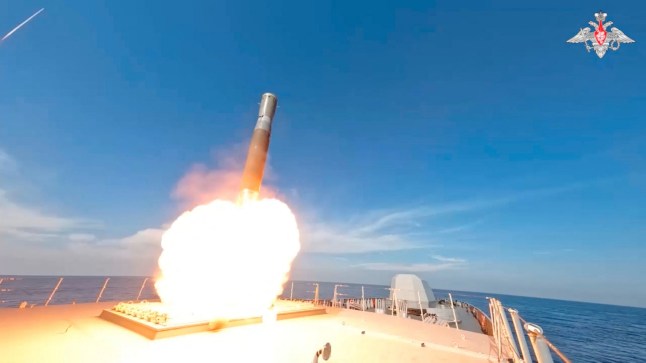
Britain has completed a major hypersonic weapons trial as part of efforts to ‘stay ahead’ of its potential enemies.
The latest UK hypersonic research could see weapons travelling at several thousand miles per hour, or more than five times the speed of sound in the next five years.
This breakthrough comes after six weeks of testing at the NASA Langley Research Centre in Virginia, with the support of the US.
Scientists have now completed testing on an engine for an in-development ‘cutting-edge’ hypersonic cruise missile, the ministry of defence announced today.
The engine ‘successfully’ demonstrated how a high-speed, air-breathing propulsion system would work, enabling greater ranges than a conventional rocket.
This means such an ultra-fast engine could eventually power missiles that go farther and faster than what is currently possible.
Defence secretary, John Healey MP, said about the efforts: ‘We are living in a more dangerous world and it has never been more important for us to innovate and stay ahead of our adversaries, equipping our forces with the technologies of the future.
‘This milestone moment on hypersonics research, supported by British scientists and British small businesses, demonstrates another crucial area where we are working in lockstep with the US to bolster our Armed Forces and strengthen our deterrence.’
What are hypersonic weapons?

There is no universally accepted definition for the term ‘hypersonic missile’, but it is typically used to describe missiles that travel at speeds greater than five times the speed of sound with significant manoeuvrability during flight.
This enables them to change trajectory during flight, making their flight-path and target difficult to predict.
They fly at lower altitudes than ballistic missiles, which means that they may be harder to track at long distances with some surface-based sensors, such as certain radar.
Paul Hollinshead, chief executive of the Defence Science and Technology Laboratory (Dstl), said this milestone represents ‘a critical advancement’ in the UK’s defence capabilities
He added: ‘The success of these tests highlights the UK’s commitment to technological leadership and innovation in this crucial area.’
So far, Russia, China, North Korea and Iran are reportedly the states which have such weapons in their arsenal.
Meanwhile, the UK announced plans to deploy its first domestically-made hypersonic cruise missile by 2030.
The US also has multiple hypersonic weapons programmes and are conducting tests.
This comes after Sir Keir Starmer announced the biggest sustained boost in defence spending since the end of the Cold War.
Got a story? Get in touch with our news team by emailing us at webnews@metro.co.uk. Or you can submit your videos and pictures here.
For more stories like this, check our news page.
Follow Metro.co.uk on Twitter and Facebook for the latest news updates. You can now also get Metro.co.uk articles sent straight to your device. Sign up for our daily push alerts here.


